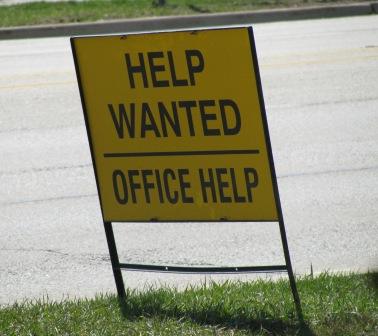
(a division of Tirekicking Today)
Solidarity Forever?
Is there still a place for unions in tomorrow's economic world?
by James M. FlammangUPDATED: June 2020

Low-wage, low-status workers are the
very ones who need unions most - yet
they're the toilers most often ignored.
"When the union's inspiration through the worker's blood shall run...." That's the opening line of Solidarity Forever, perhaps the foremost and most familiar of the old union anthems. Next stanza: "There shall be no power greater anywhere beneath the sun."
Well, the power of the union movement slipped away long ago, as the entire process of working began to undergo a transformation. Union membership today is but a shadowy fraction of the totals seen during the heyday of the labor movement: the 1920s to the 1950s.
Unions are still around, of course. Some actually remain potent, at least within their particular spheres. But the ultimate weakness of even the strongest unions shows up when the corporate/political powers choose to demonstrate their will.
That's what happened in late 2008, when Republicans in Congress pressured President George W. Bush to insist, before granting a "bridge loan" to General Motors and Chrysler, that members of the United Auto Workers Union (UAW) agree to wages that matched those given to non-union workers in southern-state factories.
Not that President Bush needed much pressuring on that score. Like his presumed idol, Ronald Reagan - who broke the air traffic controllers' union during his own term - Bush was no friend to the labor movement. His successor, Barack Obama, may have held a more favorable view; but for most of his tenure, the presence and strength of unions remained muted. Not until the advent of the "Fight For $15" movement, pushing for an adequate minimum wage, did low-wage earners start to become noticed - and effective. Surprisingly quickly, one city after another took up the mantle of boosting the minimum wage in that locale, even though the federal rate remained stagnant.
How any president's administration handles the "card check" question, which can change the way workers adopt union representation, should give a clear signal of what labor can expect. Critics have long charged that Democrats in Congress have been beholden to the unions - as if that would be more dastardly than being in the pocket of corporate interests, as too many Republicans inevitably appear to be.
Critics also point to what they claim is the excessive influence of certain labor organizations that retain a degree of power, most notably the United Auto Workers. During the quandary about "bailout" money for General Motors and Chrysler during the 2008-10 financial crisis, opponents regularly cited the UAW as a prominent cause for those corporate travesties. If only those Detroit workers would be reduced to earnings levels enjoyed by their non-union counterparts at import-brand auto plants in the southern states, they insisted, the auto companies would be able to survive and regain strength.
At this stage in history, the UAW has been fully able to fight its own battles. Not so, the millions of unorganized workers across the country, who had long been ignored both by business and labor - with several notable exceptions on the part of activists for hotel workers and the like. Clearly, the need for unionization is greatest among the lowest-paid workers, who are the most vulnerable. Their depressed state was recognized more than a century ago by the Industrial Workers of the World (IWW), the "one big union" that was formed to organize unskilled workers who were shunned by the labor organizations of that era.
In the present day, with an erratic, business-first Donald Trump at the helm, advancing (or maintaining) the status of labor presents even greater challenges. As the furor over immigration continues to fester, efforts to improve the lot of restaurant workers, cleaning staffs, and other occupations that are often filled by immigrants who lack legal status to work in the United States face monumental opposition. Sadly, too, allegations of corruption in traditional unions emerge periodically, some of them affirmed by financial behavior of top leaders. Then, early in 2020, came a far different blow: the emergence of the Covid-19 pandemic, resulting not only in grave illness and shocking numbers of deaths, but in the loss of tens of millions of jobs within a period of weeks.
As the November 2020 presidential election looms, organized labor remains "on the ropes." Yet, a potentially brilliant ray of hope could be shining toward the coming decade, as the pandemic and consequent job-loss ease and that "Fight For $15" agenda re-emerges and even more low- and middle-wage workers find their voice and raise it loudly.
Note: Additional essays on the history and current reality of labor will be developed during 2020.